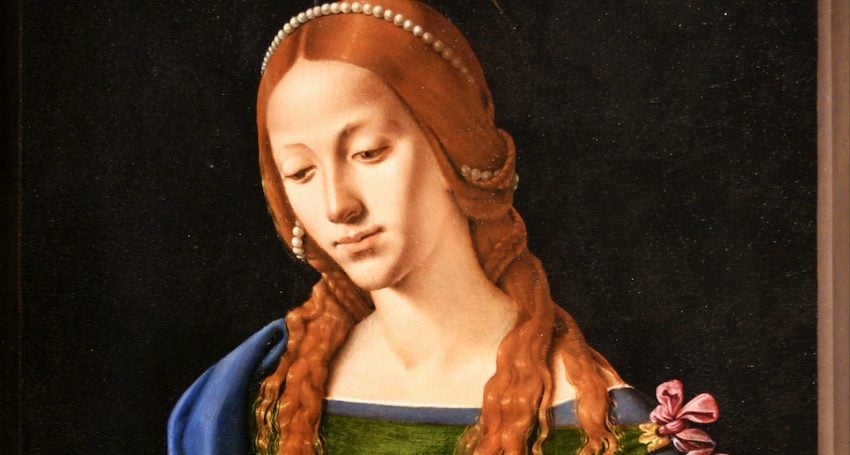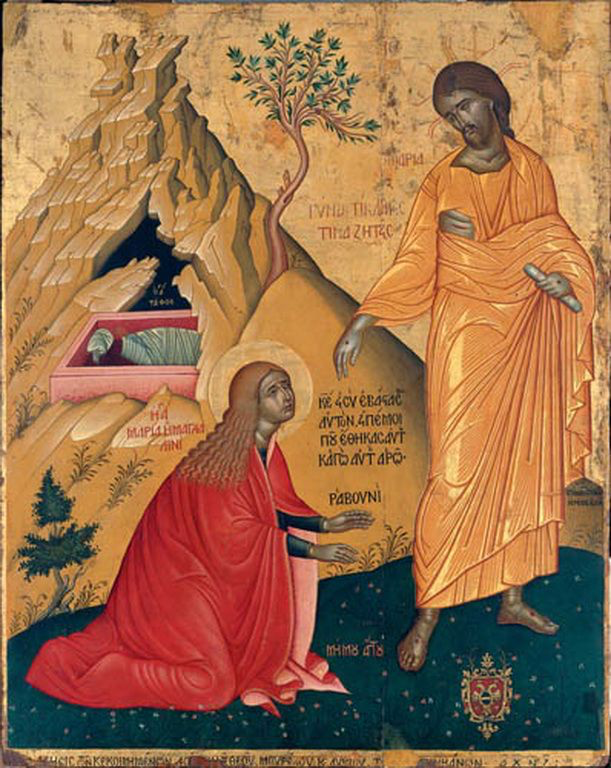Mary Magdalene: apostle to the apostles
People & History
“In celebrating her life and ministry, we give thanks for all who follow Mary Magdalene’s seminal example in contributing to the mission of the Church and in proclaiming the resurrection. In particular, we give thanks for all the women who have answered God’s call to be ministers of the Gospel,” says The Rev’d Dr Cathy Laufer, as Mary Magdalene’s Feast Day approaches on 22 July

Mary Magdalene, or Mary from Magdala, is one of a host of women named “Mary” in the New Testament – Mary the mother of our Lord, Mary of Bethany, John Mark’s mother, and others. Mary is the English form of the Hebrew name “Miriam”, clearly very popular amongst first-century Jews. This is unsurprising: they named their daughters after the Miriam who, along with her brothers Moses and Aaron, led the people of Israel out of Egypt. When they had crossed the Red Sea, it was Miriam who led the people in a song praising God for their salvation (Exodus 15.20ff).
The plethora of Mary’s (or Miriam’s) in the gospels has led to some confusion, particularly between Mary Magdalene and Mary of Bethany. However, the gospel writers clearly differentiate these two women by their home towns. Magdala is in Galilee, some 120km north of Bethany which is about three kilometres from Jerusalem. We can trace the confusion back to Pope Gregory the Great. In an Easter sermon at the end of the sixth century, Gregory conflated these two Mary’s and identified both with the “sinner” – read “prostitute” – who poured oil on Jesus’ feet (Luke 7. 36-50). Ever since, Mary Magdalene has been seen as a “reformed prostitute”, and Mary of Bethany has almost disappeared from the Church’s commemorations.
Mary of Bethany also anointed Jesus’ feet, in John’s gospel (12.3). While the action seems odd to us, in the first century it was a normal part of washing one’s feet when entering a home. Anointing someone’s feet as an act of devotion was unusual, but not unique. There is no reason to suppose that Mary of Bethany was the unnamed “prostitute”, and certainly none to equate that woman with Mary Magdalene.
Advertisement
So, if Mary from Magdala is not Mary of Bethany, and not the “prostitute” of Luke 7, what do we know of her? She is mentioned twelve times in the gospels, more than most other disciples. In Luke 8 she is listed as one of the women who travelled with Jesus and provided for him and the disciples “out of their resources”. This suggests she was a woman of some means who used her wealth to support Jesus’ mission. Mark makes a similar allusion to Mary and other women providing for Jesus (15.41). Luke also notes that “seven demons” had gone from Mary, an indication that Jesus had healed her in some way.

Touch Me Not (Noli me tangere or Me Mou Haptou) by Emmanuel Tzanes, 1657 (Image: Wikimedia Commons, public domain)
All the other references to Mary Magdalene are at Jesus’ crucifixion and resurrection. She was one of the women who were looking on as Jesus was crucified (Matthew 27.56; Mark 15.40), who observed Jesus’ burial (Matthew 27.61; Mark 15.47; John 19.25), and who discovered the empty tomb (Matthew 28.1-8; Mark 16.1-8, 9-11; Luke 24.1-10; John 20.1-2). There, at the tomb, the writer of John’s gospel gives a unique insight into Mary Magdalene and her mission.
Advertisement
The tomb is empty. The women and the disciples return to the city, puzzled and afraid. Mary Magdalene, however, stays by the tomb, weeping. She is met by the risen Christ (John 20.11-18). This is his first appearance after his resurrection, made not to one of the twelve, not to Peter or James or John, but to this woman disciple who, like the twelve, had travelled with him during his ministry.
Christ appears to Mary and gives her a task: “go to my brothers”. Mary goes and proclaims the resurrection to the other disciples, including the twelve. For this reason, Mary Magdalene was given the title, Apostola apostolorum, “Apostle to the apostles”. The defining characteristics of an apostle are to have seen the risen Christ and have the ministry of proclaiming his resurrection. Mary Magdalene was the first such apostle. Miriam led the people in praising God for their salvation; her namesake leads all who proclaim salvation in Christ.
Mary Magdalene is commemorated on 22 July in both Eastern and Western Churches. In celebrating her life and ministry, we give thanks for all who follow Mary Magdalene’s seminal example in contributing to the mission of the Church and in proclaiming the resurrection. In particular, we give thanks for all the women who have answered God’s call to be ministers of the Gospel, which is sometimes contrary to society’s expectations of women.
And today, we give thanks for all the women who have been ordained as priests, following in Mary Magdalene’s footsteps.





